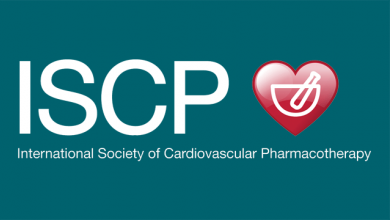Search results
Author(s):
Dan Wichterle
Added:
3 years ago
Myocardial infarction (MI) is associated with acute risk of early malignant arrhythmias that can be easily treated during in-hospital intensive care by defibrillation, adjuvant antiarrhythmic therapy or even catheter ablation in resistant cases. Indeed, such management resulted in substantial improvement in MI survival rate. Despite the implementation of primary percutaneous coronary…
View more
Author(s):
José PS Henriques
Added:
3 years ago
Despite considerable improvements in the treatment of acute ST elevation myocardial infarction (STEMI), outcomes have predominantly improved in STEMI patients without cardiogenic shock (CS). Nevertheless, cardiogenic shock occurs in approximately 7–10% of STEMI patients and is the leading cause of death for hospitalised patients. In-hospital mortality rates of STEMI complicated by CS are around…
View more
Author(s):
Lee Chang
,
Robert Yeh
Added:
3 years ago
Cardiogenic shock is the leading cause of death in patients with acute ST-elevation myocardial infarction (STEMI). Characterised by a state of low cardiac output leading to end-organ hypoperfusion, cardiogenic shock complicates approximately 5–8 % of STEMIs and is associated with a mortality rate approaching 50 percent.1–3 Prompt recognition and therapeutic intervention for cardiogenic shock due…
View more
Author(s):
Harvey D White
,
Derek P Chew
Added:
3 years ago
The cumulative evidence base informing almost every aspect of myocardial infarction acute coronary syndrome (ACS) care is expansive and has been associated with a decline in the rate of mortality. Within the context of current-era clinical trials of ST-segment-elevation myocardial infarction, 30-day mortality rates of 4–5% have now been reported for high-risk individuals,1,2 with similar rates…
View more
Author(s):
David Antoniucci
Added:
3 years ago
In the setting of acute myocardial infarction (AMI), spontaneous and percutaneous coronary intervention (PCI)-related embolisation results in a decreased efficacy of mechanical reperfusion and myocardial salvage. Direct stenting without predilation may decrease embolisation and the incidence of the no-reflow phenomenon.1,2 More specific approaches to the problem of microvessel embolisation during…
View more
Author(s):
S Othman Amen
,
Soza Tharwat Mohammed Baban
Added:
3 years ago
Background: Coronary artery disease (CAD) and its major manifestation acute MI (AMI) are the most common causes of death worldwide. Hyperhomocysteinemia (HHcy) has been recently recognised as a new emerging cardiovascular risk factor mediating in development of CAD risk. HHcy causes endothelial dysfunction, resulting in local thrombosis and subsequent ischaemia. However, the role of HHcy in…
View more
Abortion of Acute Myocardial Infarction - The Best Possible Achievement of Reperfusion Therapy
Author(s):
Roberto Sciagrà
Added:
3 years ago
Article
Author(s):
Miriam Reiter
,
Tobias Reichlin
,
Raphael Twerenbold
,
et al
Added:
3 years ago
Acute myocardial infarction (AMI) is a major cause of morbidity and mortality worldwide. Accordingly, prompt identification of patients with AMI is critical, as established therapies exist that are of proven benefit.1,2 More than 15 million patients per year present to emergency departments with symptoms compatible with acute myocardial ischaemia in the US and Europe; only 20–30%, however, are…
View more
Author(s):
Robin Hofmann
Added:
6 years ago
This interview with Robin Hofmann from Karolinska Institutet, Stockholm, SE discusses Determination of the Role of Oxygen in Suspected Acute Myocardial Infarction (DETOX) at ESC 2017.
Filmed by Radcliffe Cardiology on-site .
View more
Author(s):
Sivabaskari Pasupathy
,
Rosanna Tavella
,
Simon McRae
,
et al
Added:
3 years ago
Early coronary angiography performed during acute MI (AMI) identifies an occluded vessel in most patients with ST elevation MI (STEMI)1 and less frequently in those with non-STEMI;2 however, ≥90 % of patients with AMI have evidence of obstructive coronary artery disease.3 For these patients with overt coronary artery disease (CAD), the benefits of reperfusion strategies and cardioprotective…
View more












